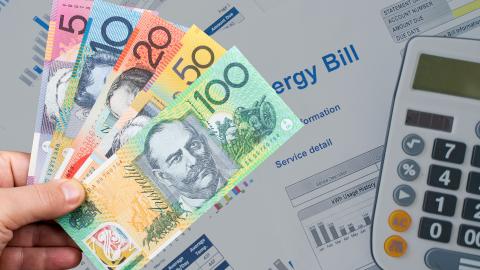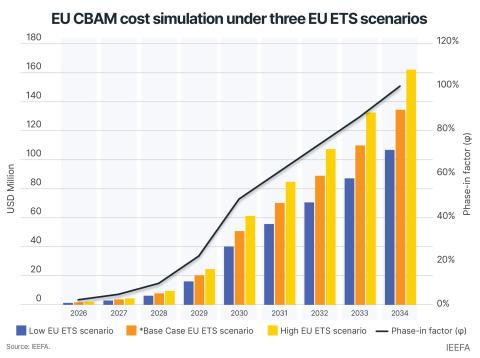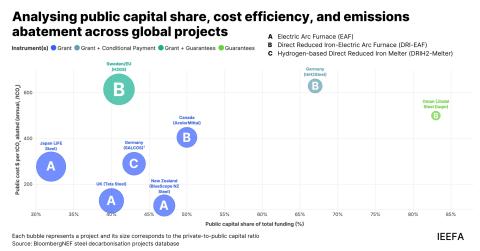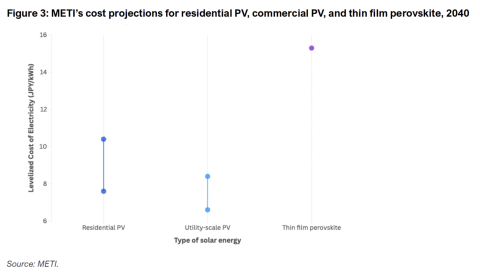From boom to balance in Vietnam’s clean energy transition
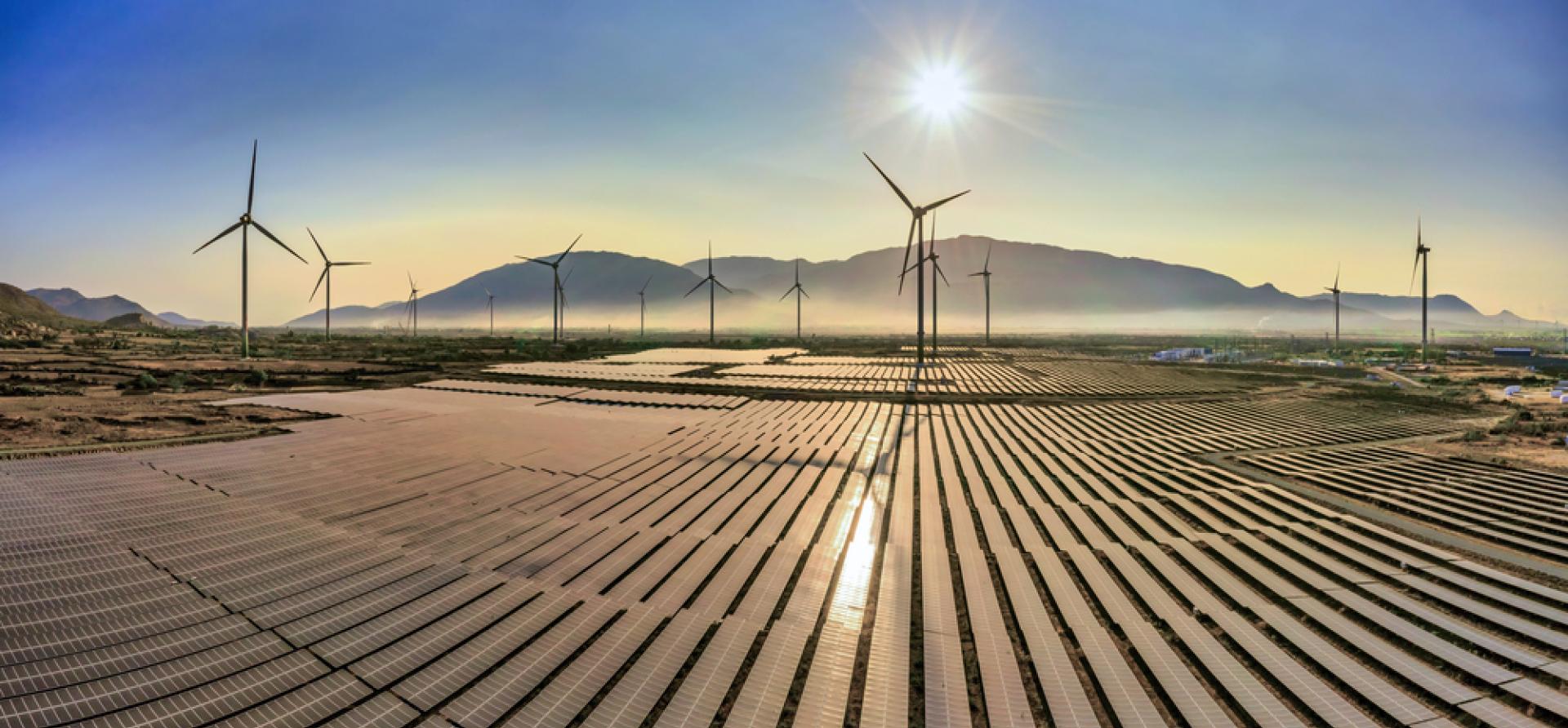
Key Findings
Vietnamese authorities are looking to retroactively revise purchase prices for 173 solar and wind projects, reducing revenues by 25% to 46%, risking bankruptcies across the renewable energy sector, and jeopardizing investor confidence needed to meet the government’s 2030 targets of 73 gigawatts (GW) solar and 38GW wind capacity.
As global costs for solar, wind, and battery storage systems fall, Vietnam could replace fixed feed-in tariffs (FiTs) with standardized competitive auctions to procure clean energy at the lowest cost. This approach has significantly reduced prices in India, where solar tariffs dropped from USD9.72 cents per kilowatt hour (¢/kWh) in 2014 to USD3.04¢/kWh in 2024.
Vietnam can leverage domestic solar manufacturing to meet domestic demand, implement direct power purchase agreements (DPPAs) enabling private renewable supplies, accelerate grid and battery storage infrastructure, and avoid costly LNG imports by prioritizing renewables.
Vietnam’s clean energy transformation was one of the fastest in Southeast Asia. Between 2018 and 2023, the country scaled up its solar and wind capacity from virtually zero to over 21,000 megawatts (MW), fueled by generous feed-in tariffs (FiTs) that attracted billions in private investment. Nearly 58% of that investment was from purely domestic sources and 27% through domestic-foreign joint ventures. By 2023, Vietnam had become Southeast Asia’s largest solar power producer, proving that the energy transition could occur rapidly. However, the very success of this boom has sowed the seeds of a policy reckoning. The rapid, subsidy-driven expansion has exposed gaps in planning and financial sustainability – laying the groundwork that is now reshaping the sector’s trajectory.
The state utility Vietnam Electricity (EVN) is now under financial strain due to the tariffs it set, which were as high as USD9.35 cents per kilowatt hour (¢/kWh). EVN’s total power purchase payments – including to both private and state-owned generators across coal, gas, and renewables – soared from USD4.5 billion in 2018 to USD11.5 billion in 2023, far outpacing its revenue growth. Meanwhile, retail electricity prices remained tightly regulated and failed to keep up with rising generation costs. As a result, EVN reported over USD1 billion in losses in 2023 despite retail price hikes.
As Vietnam grapples with rising power purchase costs and mounting utility losses, policymakers are under pressure to recalibrate the system to ensure long-term financial sustainability. But can recent interventions – such as retroactive tariff adjustments and recently reduced, though still existing, FiTs – strike the right balance between fiscal responsibility, maintaining investor confidence, and accelerating Vietnam’s clean energy economy?
Retroactive tariff cuts risk eroding investor confidence
In late 2023, a Government Inspectorate audit found that 14 solar projects in the Ninh Thuan province had inaccurately received the top-tier FiT rate of USD9.35¢/kWh. This prompted the Ministry of Industry and Trade (MoIT) to direct EVN to reassess the FiT eligibility. The Inspectorate later concluded that MoIT had approved 154 projects (totaling 13,837MW) for the national power development plan without proper legal grounds.
In response, Vietnamese authorities have moved to retroactively revise the purchase prices for 173 solar and wind projects, reducing expected revenues by 25% to 46% and raising the possibility of reclaiming what are viewed as ‘overpayments’. In March 2025, the Vietnam Chamber of Commerce and Industry warned Parliament that if EVN proceeds with these changes, it could trigger bankruptcies across the renewable energy sector and jeopardize investor trust.
Aside from potential legal disputes, such policy reversals risk derailing Vietnam’s clean energy ambitions. According to the revised Power Development Plan 8 (PDP8), the country aims to reach 73 gigawatts (GW) of installed solar power capacity and 38GW of onshore wind power by 2030 – a goal dependent on maintaining investor confidence.
Acknowledging FiT’s past role and charting a strategic path forward
It is important to recognize that despite its costs, the FiT regime kickstarted Vietnam’s renewable energy industry. By motivating scores of domestic companies, it created thousands of jobs, mobilized billions in investment, and laid the foundation for a domestic clean energy economy. The scale and pace of this initial success gave planners the confidence to revise PDP8, as confirmed by the Prime Minister in April 2025, accelerating the integration of renewables into national power sector development. The targets for 2030 were significantly raised from the original 2023 plan – solar capacity was increased to between 46GW and 73GW, onshore wind to 26GW-38GW, and energy storage to 10GW-16GW. Meanwhile, projected contributions from natural gas remained largely unchanged.
Progress on planned natural gas-fired power projects has proven difficult, whether using domestic gas or imported liquefied natural gas (LNG). This likely stems from the substantial upfront capital required for the integrated gas-to-power value chain, compounded by high, ongoing fuel costs denominated in US dollars. These costs would ultimately need to be passed on to consumers or absorbed by the state. Such financial hurdles have challenged the government’s ability to use fossil fuels to expand electricity supply in step with Vietnam’s fast-growing economy.
Contrastingly, solar and wind power’s lower capital requirements and faster development timelines are well-suited to meeting Vietnam’s near-term energy needs. These projects can be implemented within months and with high certainty, unlike gas projects, which typically take four to five years to complete once financed.
Vietnam is now well-positioned to transition to the next phase of its clean energy journey – adopting cost-effective models such as competitive green auctions for renewables, advancing direct power purchase agreements (DPPAs), and accelerating grid infrastructure and energy storage investments.
Adopting green auctions for renewables and other recommendations
With global costs for solar, wind, and battery storage systems continuing to fall, Vietnam could replace fixed FiTs with transparent auctions, enabling clean energy procurement at the lowest cost. Competitive bidding incentivizes project developers to optimize design, specifications, and implementation, driving innovation and lowering prices. Bidding also increases price transparency, which boosts confidence among government stakeholders and financiers.
Many project developers in Vietnam have become reliant on FiTs’ cash flow certainty, prompting calls for policy extension. However, continued dependence on fixed tariffs, even at the government’s recently reduced rates, risks locking the system into another high-cost procurement cycle. Meanwhile, global costs of solar panels, wind turbines, and battery storage systems continue to decrease. The government may regret signing fixed-price deals one year, only for capital costs to fall the next. Competitive bidding helps align procurement costs with market conditions, leading to more economically and politically sustainable outcomes. This benefits both the government and investors while reducing risks for all parties.
Across Asia, standardized competitive bidding has been proven to drive prices down significantly, most notably in India. India’s auction-based solar program has yielded over 59GW of installed capacity, with tariffs dropping from USD9.72¢/kWh in 2014 to a weighted average of just USD3.04¢/kWh in 2024. The model has proven effective even in smaller markets. For instance, Cambodia’s 2019 solar auction produced a regionally record-low tariff of USD3.87¢/kWh.
Beyond competitive bidding, Vietnam can leverage other assets and policies to sustain momentum toward a secure energy future:
- Tapping existing domestic green technology supply chains: Amid ongoing tariff and trade policy uncertainties, especially with the United States, Vietnam’s strong domestic solar technology manufacturing capacity could shift from an export-oriented focus to meeting domestic demand. Current PDP8 targets could see onshore solar panel demand range between 9GW and 14GW annually, which could absorb potential export shortfalls and support local industry.
- Catalyzing the DPPA program: In July 2024, Vietnam issued a landmark decree permitting DPPAs between private renewable energy generators and consumers. This policy allows private companies to sell green power to large consumers through EVN’s transmission network or, in a regional first, through investors’ own, privately developed transmission lines. As noted by the Institute for Energy Economics and Financial Analysis (IEEFA), DPPAs can significantly increase renewable energy supplies through private sources without burdening the state budget. The policy especially appeals to global corporations with operations in Vietnam, including the 159 RE100 corporate members with 100% renewable energy targets.
- Accelerating grid infrastructure and energy storage investments: Rapid growth in renewable expansion must be matched by investment in grid infrastructure and storage to ensure system reliability. Grid bottlenecks are already curtailing wind and solar in high-resource areas, highlighting the urgency of upgrades. This need is recognized in PDP8, which calls for more than USD18 billion in transmission investment and installing 10,000MW to 16,300MW of battery storage by 2030 – up from virtually none today.
- Avoiding reliance on liquefied natural gas (LNG) imports: LNG is a high-cost, high-risk option for Vietnam’s power sector. IEEFA’s previous work has cautioned that increasing LNG dependence would expose the country to a highly volatile, foreign currency-denominated fuel subject to global price fluctuations. Locking into long-term dollar-denominated LNG supply contracts and indexed payments for infrastructure could strain government budgets and undermine energy security, as seen when soaring gas prices spurred inflation and economic hardship in import-dependent Asian markets. Alternatively, solar and wind have no fuel costs and fixed, one-time capital costs. Prioritizing domestic renewables and grid resilience over new LNG-to-power projects can shield Vietnam from global fuel price and exchange rate volatility while still meeting demand growth.
Vietnam stands at an inflection point. Its FiT regime was critical in jumpstarting the country’s clean energy transition — creating jobs, attracting investment, and laying the groundwork for structural reforms such as the DPPA framework and a renewables-focused revised PDP8. With this foundation in place, Vietnam is poised to enter a more mature and cost-efficient phase of renewable energy development. While the FiT policy served its purpose, the time has come to transition to a more efficient model, driven by competition and innovation, that can lead Vietnam into a new era of renewable energy. The country can strengthen energy security, enhance economic resilience, and maintain investor confidence by adopting competitive green auctions, scaling up DPPAs, investing in grid and storage infrastructure, and reducing exposure to volatile fossil fuel markets. The next chapter in Vietnam’s energy story can build on early successes while adapting to key learnings and evolving market dynamics.



